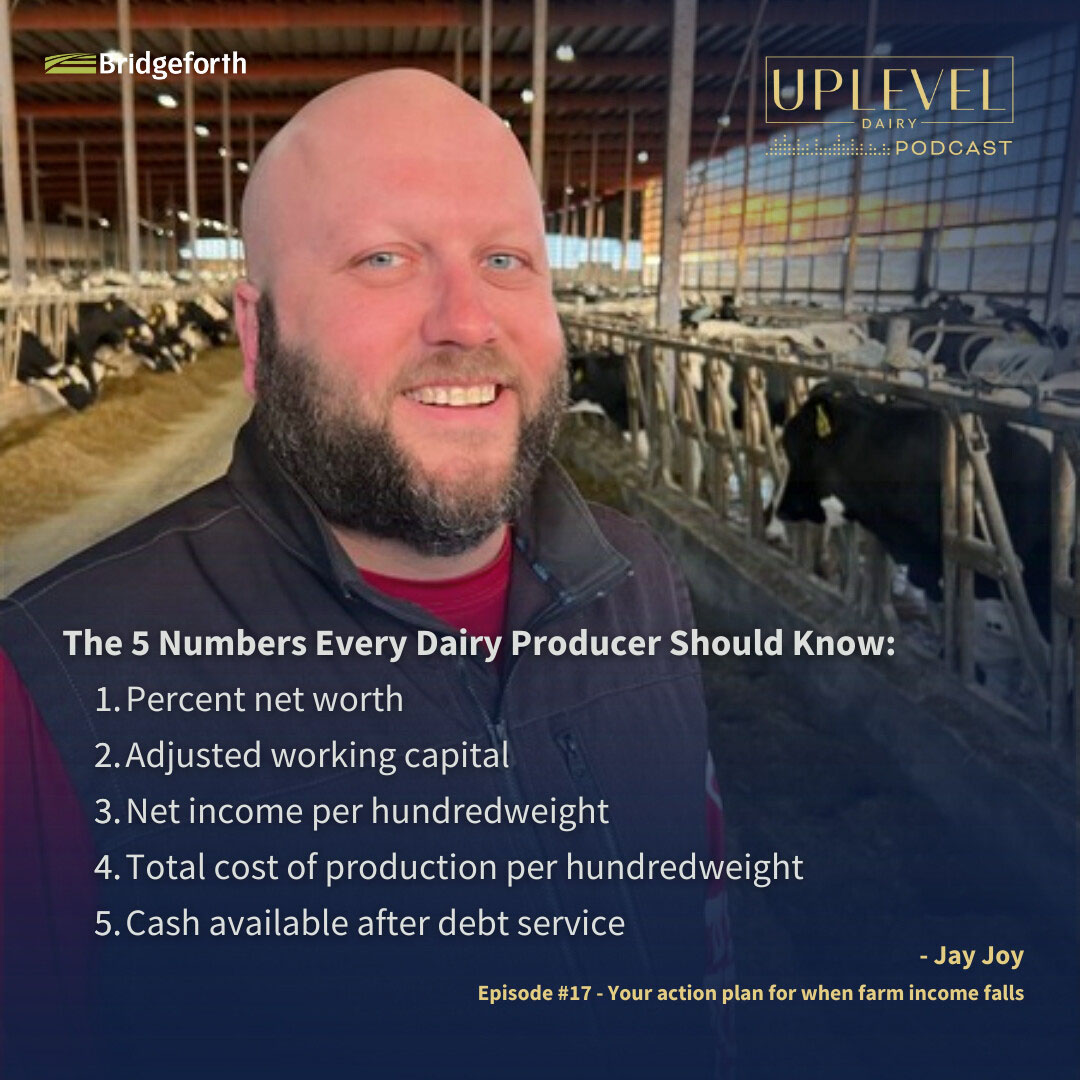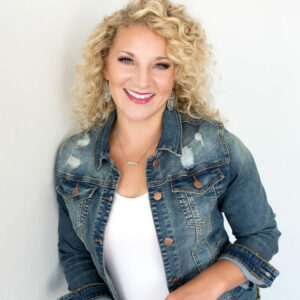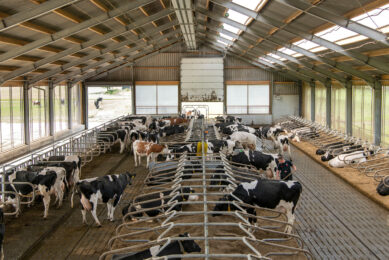5 numbers dairy farmers should have at their fingertips

What are the top 5 numbers that your banker truly cares about? What numbers should every dairy farmer have at their fingertips to keep a pulse on the financial health of their business?
As a fractional CFO and former agriculture banker himself, Jay Joy with Bridgeforth LLP is at the table for these conversations to help dairy farmers keep their lines of credit open and available with their lenders.
Here are the 5 numbers you need to know…
1. Percent net worth
It’s one of the most basic numbers to know. “What is your percent net worth?” Joy asks, and “How much of the business’ capital requirements are the banks and other creditors providing versus how much is the family or the ownership group providing?”
2. Adjusted working capital per mature cow
“The second thing I’m going to want to know is how much adjusted working capital does the dairy have,” Joy says.
On the balance sheet for a dairy operation, it is calculated like this: Take all current assets and current liabilities, and simply move the cattle herd related assets into a current asset and move the cattle herd related liabilities into a current liability. Then, simply take the adjusted current assets minus adjusted current liabilities to arrive at adjusted working capital. Next, divide your adjusted working capital by the total amount of mature cows in your operation to determine the adjusted working capital per mature cow.
Adjusted Current Assets – Adjusted Current Liabilities = Adjusted Working Capital
Adjusted Working Capital / Number of Mature Cows = Adjusted Working Capital per Mature Cow
“If you’re financing with a lender that’s providing a line of credit governed by what they call a borrowing base, another very similar calculation would be your borrowing base excess per cow,” Joy says. “Those are 2 balance sheet-related measures that I would want to know pretty quickly.”
3. Net income (per hundred weight and per mature cow)
Jay says to also know your bottom-line net income (on an accrual basis), and then look at that on both a per hundred weight and per mature cow basis.
4. Total cost of production (per hundred weight) on an accrual basis
“So any of these income statement-related numbers that I’m mentioning, the assumption is that these are accrual based numbers. They’re not cash or tax basis numbers.”

Then the last one would be: What is the…
5. Cash available after debt service
It’s a pretty simple calculation. Joy explains: “How much revenue did the business generate minus how many dollars worth of expenses did the business incur. Then, subtract total principal debt service requirements. The result of this calculation is cash available after debt service.
(Total Revenue – Total Expenses) – Principal Debt Service Requirements = Cash Available After Debt Service
Know more than the numbers; know the trends
“So, just as important as it is to know these 5 numbers, a really key thing is being able to know and track the trends associated with each one over time,” Joy concludes.
From the Uplevel Dairy Podcast, Episode #17: “Your Action Plan for When Farm Income Falls.”
Join 13,000+ subscribers
Subscribe to our newsletter to stay updated about all the need-to-know content in the dairy sector, two times a week.










